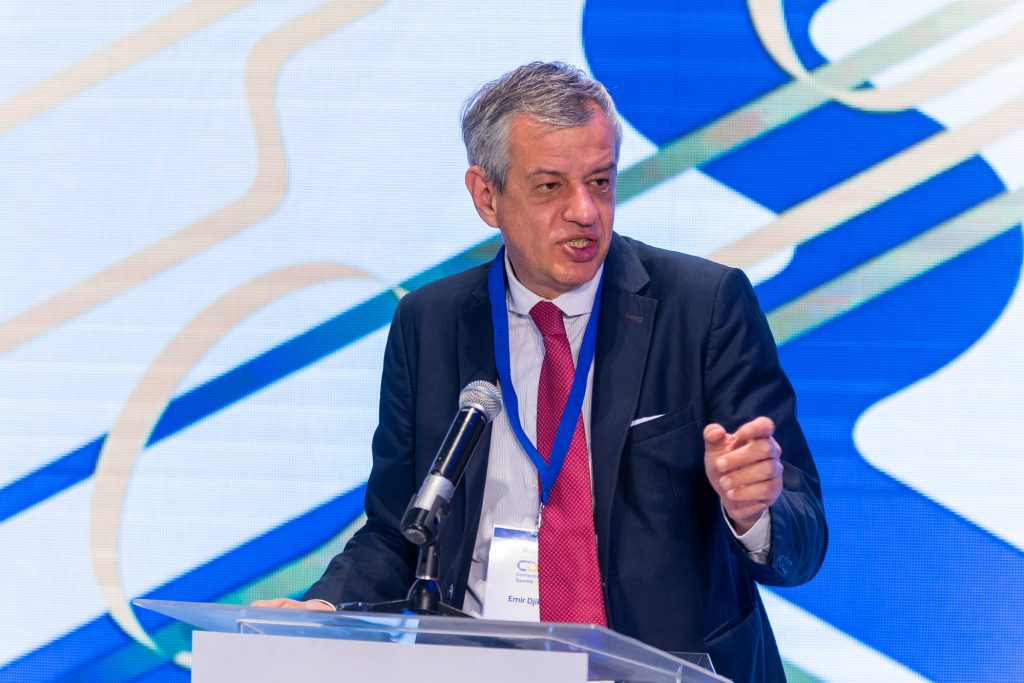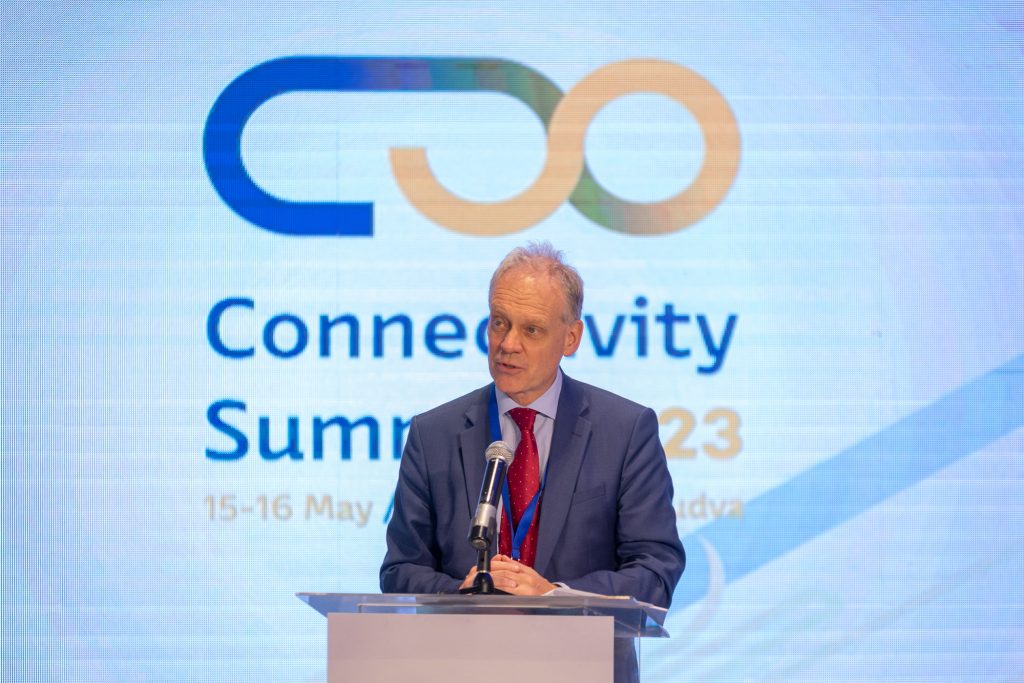Budva, Montenegro, 16 May – Efficient transportation of people and goods ensures access to jobs and services and enables trade and economic growth in the economies. This was a key message at the Connectivity Summit, organised by the Transport Community Permanent Secretariat and the Central European Free Trade Agreement (CEFTA) Secretariat, under the auspices of the Ministry of Capital Investments of Montenegro. Deputy Prime Minister Ervin Ibrahimovic and the Director General for Neighborhood and Enlargement Negotiations Gert-Jan Koopman opened the Summit, that gathered Transport Ministers, Customs Directors, International Financial Institutions and other high-level representatives, experts and stakeholders from Western Balkans region to discuss and agree on moving forward the issues related to sustainable and efficient trade, transport and logistics.
“Connectivity Summit focuses on investments in transport infrastructure and reforms of policies that will facilitate transition to more efficient mobility in the Western Balkans in line with the strategic documents of the Transport Community. Actions targeting the main road and rail border crossings on the indicative extension of the TEN-T Network in the Western Balkans, including with the neighbouring EU Member States, will address inefficiencies and delays at those points and modernise the operations. The Transport Community is working with its partners to improve the interactions of different transport modes along the Network to enable smoother, more efficient, and less costly logistic chains,” Transport Community Permanent Secretariat Director Matej Zakonjsek said.
Emphasizing the importance of the Green Lanes initiative, CEFTA Secretariat Director Emir Djikic stated: “We could not select better topic for this year Connectivity Summit than the one that refers to strengthening the links between the CEFTA and the EU in transport and trade. The Green Lanes are much more than simplified transport of goods, it is a continuous support mechanism to our businesses, through introducing digitalized services and systematic exchange of electronic data (SEED+), that bring us closer to the paperless trade. It is also a concept of enhanced cooperation with the EU. The European Commission is committed to full implementation of the Green Lanes and close coordination in other customs and border-related matters, which once again confirms that the CEFTA Parties are reliable partners”.
Video messages:
The high-level Understanding on Indicative TEN-T Maps in the Western Balkans was signed by the EU and the Transport Community Treaty contracting parties. The establishment of the new Western Balkans- Eastern Mediterranean Corridor aims to strengthen region’s economic, social and territorial cohesion and create seamless transport systems across borders, without physical gaps, bottlenecks or missing links. The Joint CEFTA-TCT Declaration “Taking Forward the Green Lanes”, committing to further facilitate transport and trade with aim to reduce waiting times and improve the efficiency of the EU logistic and value chains, has been also endorsed. It will give further impetus to all relevant authorities to work on full extension of the Green Lanes and establishing one-stop and syncronised border controls.
The extension of the Green Lanes to the Western Balkans region, as an answer to the sanitary crisis in 2020, and the EU-Ukraine Solidarity Lanes, a result of Russia’s war of aggression against Ukraine, are good examples that addressed transport and trade blockages and highlighted the importance of long-term transport and trade facilitation measures, such as multimodal infrastructure, international transit agreements, digitalisation of procedures, and sharing pre-arrival information for the movement of goods.
Given these developments, the Western Balkans parties and Ukraine, Georgia and Moldova share a common denominator when it comes to the development of their transport policy and network: the need to work together and with the European Commission on setting the same standards and quality of service along a truly interconnected TEN-T Network that will link Europe with Central Asia, opening up the possibilities for new trade routes or strengthening the existing ones.






